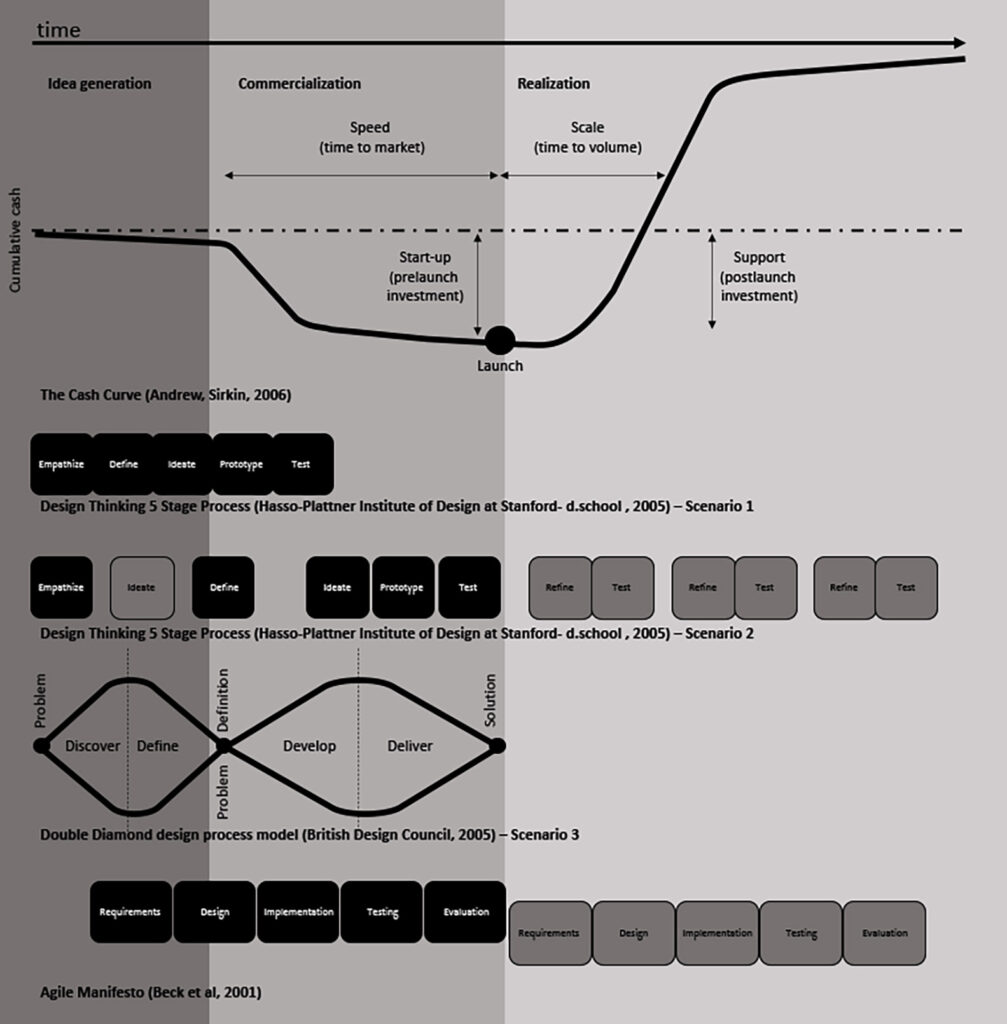Revenue models propose a great way to understand the alignment and misalignment between design and business project cycles. Typical models map cumulative cash flow over time, through stages of Idea Generation, Commercialization and Realization. With differences in terminology, this model holds true to many organizations, and though it allows designers to perform and add value to the process, it also uncovers the underlying issues that reflect many times levels of misunderstanding and tension between designers and non-designers.
While many models place the idea generation and commercialization blocks as equal in time, activities by the designer are majorly focused on the idea generation portion of the process, and even if we extend the design thinking process further into the commercialization stages, this implies duplication of idea generation following a traditional divergence/ convergence model of design also core to their activity.
In most models, the activity of designing solutions is included in the commercialization stage, which incorporates all development methods and partners involved in the pre-launch activities of said solution. After the solution is launched, many believe the designer is relieved of their duties, but there are many design activities that are crucial for the correct deployment and realization of a solution, activities that may impact scaling, as well as cumulative cash and staying power.
So, while organizations are doing their best to reduce the negative cumulative cash stages of their cycle in the idea generation and commercialization phases, while planning and working towards a shorter time to volume stage after launch (some organizations live and die by first year sales), designers often find themselves not having enough time and resources to develop activities in the these stages, namely activities of exploration which in the end impact the product return on investment both in terms of revenue and scaling. Many organizations build their KPI’s around concepts that are deeply connected to these revenue models, by quantifying time spent in idea generation and commercialization (time to market), respect for launch dates, scale (time to volume), number of solutions launched (breaking down numbers by type of innovation), to name a few.
